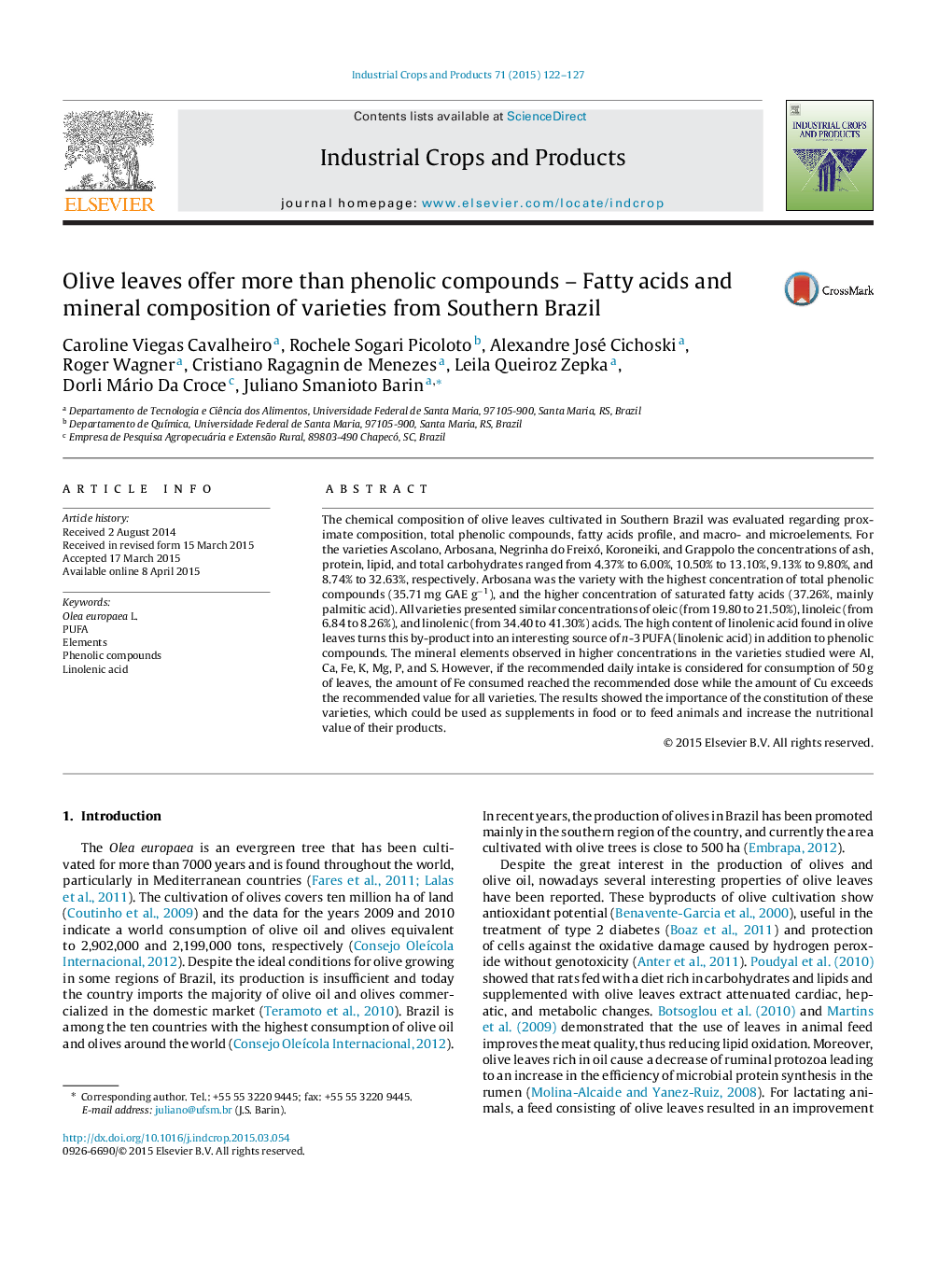| Article ID | Journal | Published Year | Pages | File Type |
|---|---|---|---|---|
| 6376095 | Industrial Crops and Products | 2015 | 6 Pages |
â¢Olive leaves are not only a source of phenolic compounds.â¢The content of n-3 PUFA was more than 40 times higher in leaves compared to oil.â¢Cu and Fe content of leaves reached the recommended daily intake of these elements.
The chemical composition of olive leaves cultivated in Southern Brazil was evaluated regarding proximate composition, total phenolic compounds, fatty acids profile, and macro- and microelements. For the varieties Ascolano, Arbosana, Negrinha do Freixó, Koroneiki, and Grappolo the concentrations of ash, protein, lipid, and total carbohydrates ranged from 4.37% to 6.00%, 10.50% to 13.10%, 9.13% to 9.80%, and 8.74% to 32.63%, respectively. Arbosana was the variety with the highest concentration of total phenolic compounds (35.71Â mg GAE gâ1), and the higher concentration of saturated fatty acids (37.26%, mainly palmitic acid). All varieties presented similar concentrations of oleic (from 19.80 to 21.50%), linoleic (from 6.84 to 8.26%), and linolenic (from 34.40 to 41.30%) acids. The high content of linolenic acid found in olive leaves turns this by-product into an interesting source of n-3 PUFA (linolenic acid) in addition to phenolic compounds. The mineral elements observed in higher concentrations in the varieties studied were Al, Ca, Fe, K, Mg, P, and S. However, if the recommended daily intake is considered for consumption of 50Â g of leaves, the amount of Fe consumed reached the recommended dose while the amount of Cu exceeds the recommended value for all varieties. The results showed the importance of the constitution of these varieties, which could be used as supplements in food or to feed animals and increase the nutritional value of their products.
